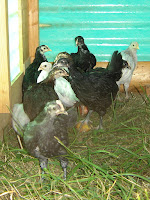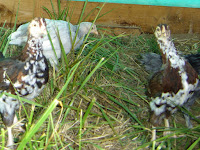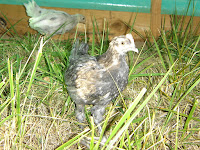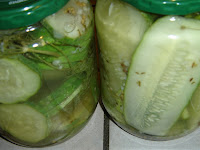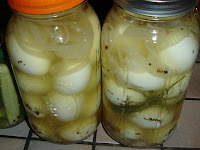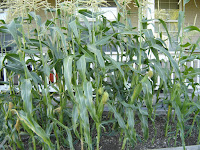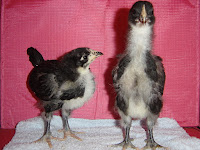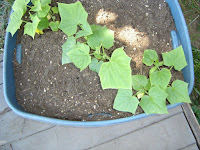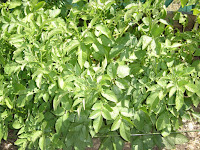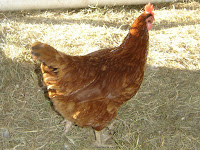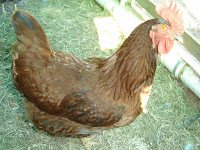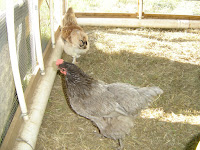I have read so many different recipes for this that my head is swimming. Some does and don'ts that might help. I'll update this as needed. This is my second year making my own Raw Apple Cider Vinegar (RACV) using apple peels, cores, and pieces of apples that I freeze and save over the year. Most of our apples are the honey crisp from our trees, but also granny smith and fuji that we get from the store. I just save the peelings and pieces/chunks from any apples we have started to use, but didn't need the whole thing. I store them in a ziploc type of bag in the freezer until I have enough. This recipe if for a quart jar, but my most recent batch is being done in a 5 gallon ceramic crock. This should give us about a gallon and a half, or so. When done, I will strain the RACV into half-gallon jars and keep them stored in a dark location.
Make sure to wash/rinse fresh apples before peeling. Don't use any apple pieces that are starting to rot, are black, or moldy. Worm holes, bruises, etc. are fine. I don't even remove the stems or the seeds, personally. Just don't let the peels, et al. set in the refrigerator for days. Put them right into the freezer bag in the freezer.
While fermenting or whatever they call it, a warm dark place seems to work best for me. Not too warm, about room temp (68F - 72F). I don't usually use jars. But when I have, I keep them inside a brown paper bag to help with maintaining the darkness. I don't use any metal on the jars. I just use two layers of cheese cloth to allow for the release the fumes/gasses and rubber bands to hold the cloth in place. Try to check them daily or several times per week. Some people stir or swirl the jars slightly to ensure that there are no apple pieces that dry out or get moldy. In the crock, I use one layer of cheese cloth and a wet kitchen towel over the top. I also use a dinner plate upside down to help weight down the apple pieces until they all sink and don't float any more. Again, stir every day or two, to help with making a more even break down of the apples. A batch using a quart jar will produce about two cups of RACV.
I am NO expert on this. So here is an article that helps explain the process a bit better and why not to use this type of Apple Cider Vinegar for canning purposes. Another page about Apple Cider Vinegar with links to uses.
I use my RACV for refrigerator pickling, but that process is not canning. I also use the RACV for making fresh mayo, in cooking/recipes, and for my chickens as a probiotic.
The Raw Apple Cider Vinegar using Apple Scraps Recipe
8 oz of Apple scraps (yes, I weigh them)
2 Cups of Water (unchlorinated, distilled, or let the water set for a day or two before adding to the jar)
2 Tablespoons of Honey (sugar works... brown, white, raw, etc.)
4 Tablespoons of RACV (Braggs will work) I shake up the bottle to ensure that the mother is all broken up and distributed in the jar before I measure it out. A lot of recipes do not include this. I do.
Sterilize the glass jar and allow it to cool off. Add apple scraps. The scraps should fill the jar by about 2/3 or 3/4 full without being forced down. The water should be enough to cover the apples but NOT fill the jar. That extra space is necessary in the process.
I mix the honey and RACV in the water before adding it to the apple scraps in the jar.
Cover the jar with two layers of cheese cloth using a rubber band, and place the jar in a warm dark location (or in a brown paper bag on the counter, fold over and clip the top). If using a crock, you can cover the top with a wet towel, and keep the towel damp during the next few weeks.
Check daily or at least every other day to swirl/stir. If any dark film starts to form at the top, remove it and watch for any mold. This fermentation process usually takes about two or three weeks and it is the cider process. I wait until I see that the apples no longer float.
When the scraps no longer float, you may notice a white film starting to form on the top of the water. That will be the mother. BUT, it may not form until later. If it is already starting to form, scrape off the mother with some of the juice and set it aside. Strain out all the apple scraps, stems, and seeds. You may need to squeeze them a little to keep all the RACV liquid for the next phase. Pour the strained liquid into fresh sterile jars, add the mother back in if you had any, and put fresh cheese cloth over the jars. IMPORTANT - Do not fill the jars to the top. Leave about two inches from the very top, or about an inch below the neck of the jar. Now we are starting the vinegar phase.
Store the cheese cloth covered jars in warm dark location for another four to six weeks. The mother should be fully formed the top. I check mine a couple times per week to ensure that there is no mold starting to form. If you get mold at this point, you should not use that jar of vinegar (in my opinion). The jar may not have been sterile enough, or there may have been something that got in the jar that caused the mold to form.
Now, for my big batch of apple cider vinegar this year, I used, as follows:
6.5 lbs Apple Scraps
26 Cups of Water (6 Quarts + 1 Pint)
1+2/3 Cups Honey
2 Cups RACV with mother
I mixed them all up and poured them into my 5 gallon Crock. I could have gotten by with a 3 Gallon one, but I don't have that size. I used sterilized dinner plate turned upside down to press the apple scraps down under the water and picked out the apple seeds that floated to the top. Then covered the crock with a layer of cheese cloth, and the wet dish towel. Now to check daily and wait.







